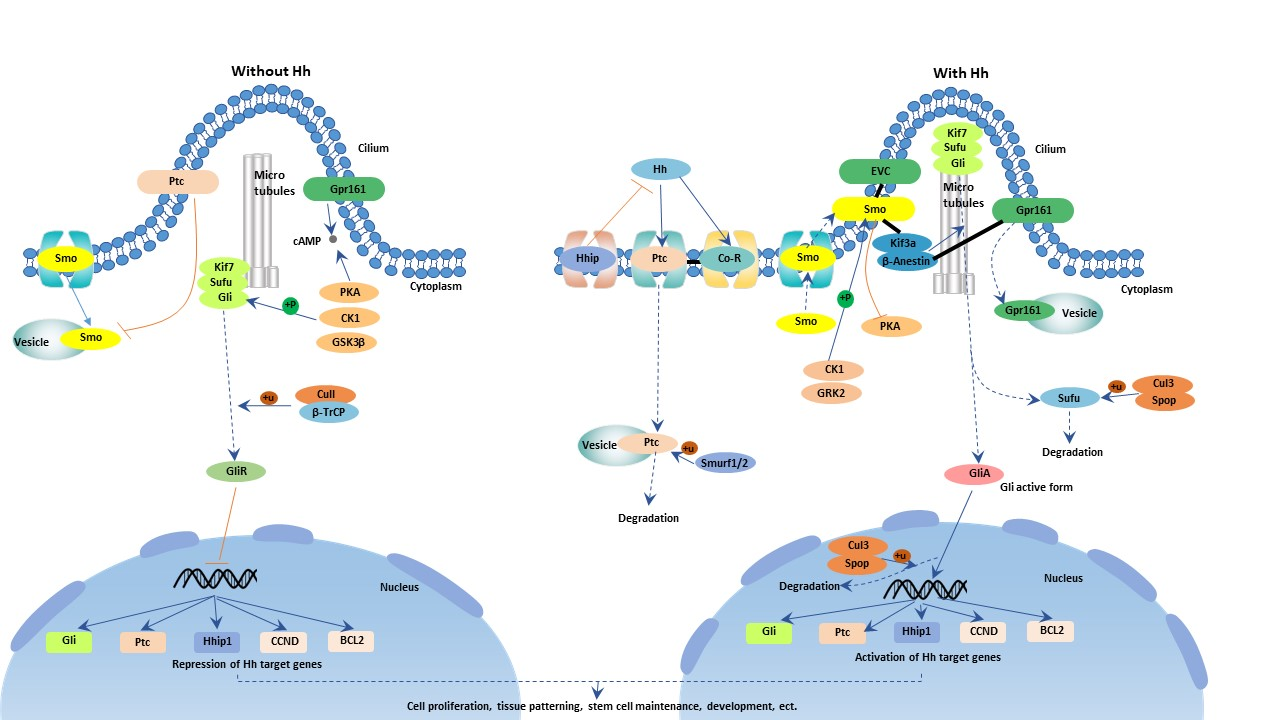
What is Hedgehog Signaling Pathway?
The Hedgehog signaling pathway is one of the key regulators of animal development, and a signaling pathway which transmits information to embryonic cells required for proper cell differentiation. The name of pathway derives from its polypeptide ligand, an intercellular signaling molecule called Hedgehog (Hh) found in fruit flies of the genus Drosophila.
The Function of Hedgehog Signaling Pathway
The evolutionarily conserved Hedgehog (Hh) pathway is essential for normal embryonic development and plays critical roles in adult tissue homeostasis, including maintenance, renewal and regeneration. Secreted Hh proteins act in a concentration- and time-dependent manner to initiate a series of cellular responses that range from survival and proliferation to cell fate specification and differentiation. Additionally, this pathway remains important during later stages of embryogenesis and metamorphosis.
The Processes of Hedgehog Signaling Pathway
As it shows in following figure, this pathway primary includes two parts.
In Hh's absence, the Ptch receptor localizes to the cilium, where it inhibits Smo activation. Gli proteins are phosphorylated by PKA, CKI and GSK3B and partially degraded into truncated Gli repressor form (GliR) that suppresses Hh target gene transcription in the nucleus.
In Hh's presence, Ptch disappears from the cilium, and activated Smo contributes to the translocation of the protein complex Gli, Sufu, Kif7 to ciliary tip, where Gli dissociates from the negative regulator Sufu. The production of Gli activator form (GliA) occurs and the increased nuclear accumulation of GliA results in activation transcription of Hh target genes.
Hedgehog Signaling Pathway and Related Diseases
In addition to critical roles in normal embryonic development and adult tissue homeostasis, aberrant Hh signaling pathway is responsible for the initiation of a growing number of cancers, including classically, basal cell carcinoma, rhabdomyosarcoma, and edulloblastoma.
Additionally, overactive Hh signaling has been implicated in pancreatic, lung, prostate, ovarian, and breast cancer. Thus, understanding the mechanisms that control Hh pathway activity will inform the development of novel therapeutics to treat a growing number of Hh-driven pathologies.





